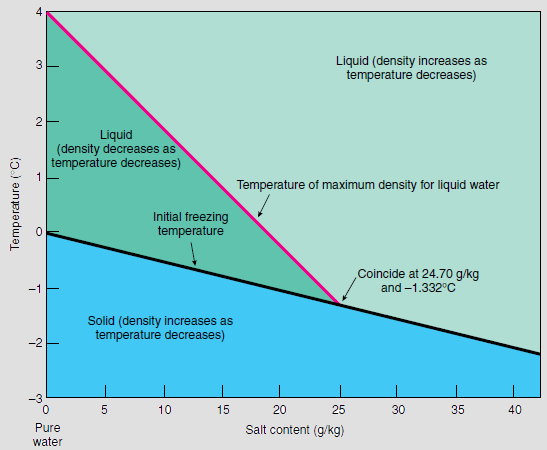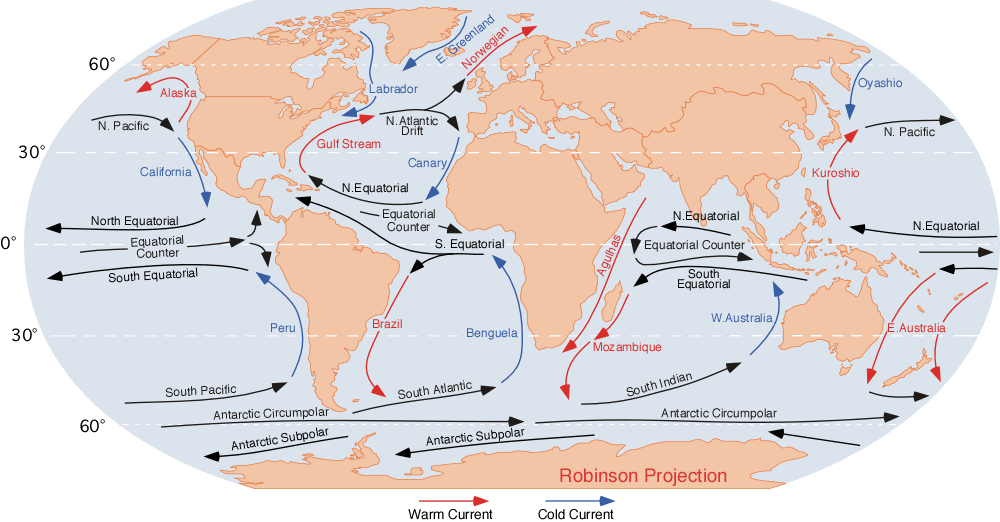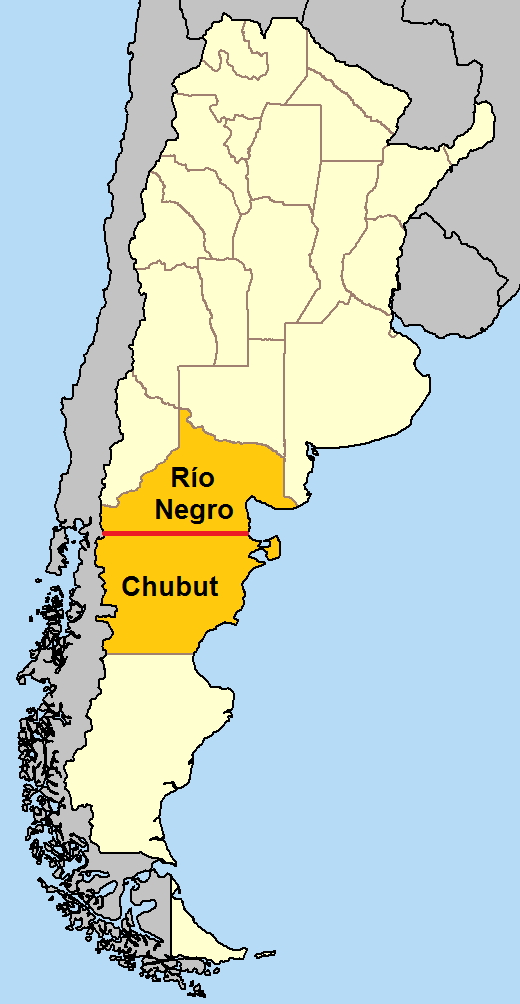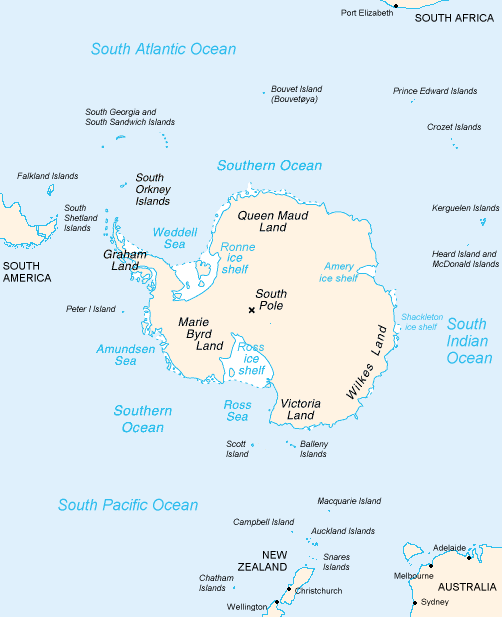|
Subantarctic Glaciers
The sub-Antarctic zone is a physiographic region in the Southern Hemisphere, located immediately north of the Antarctic region. This translates roughly to a latitude of between 46° and 60° south of the Equator. The subantarctic region includes many islands in the southern parts of the Atlantic, Indian, and Pacific oceans, especially those situated north of the Antarctic Convergence. Subantarctic glaciers are, by definition, located on islands within the subantarctic region. All glaciers located on the continent of Antarctica are by definition considered to be Antarctic glaciers. Geography The subantarctic region comprises two geographic zones and three distinct fronts. The northernmost boundary of the subantarctic region is the rather ill-defined Subtropical Front (STF), also referred to as the Subtropical Convergence. To the south of the STF is a geographic zone, the Subantarctic Zone (SAZ). South of the SAZ is the Subantarctic Front (SAF). South of the SAF is anoth ... [...More Info...] [...Related Items...] OR: [Wikipedia] [Google] [Baidu] |
Weather Front
A weather front is a boundary separating air masses for which several characteristics differ, such as air density, wind, temperature, and humidity. Disturbed and unstable weather due to these differences often arises along the boundary. For instance, cold fronts can bring bands of thunderstorms and cumulonimbus precipitation or be preceded by squall lines, while warm fronts are usually preceded by stratiform precipitation and fog. In summer, subtler humidity gradients known as dry lines can trigger severe weather. Some fronts produce no precipitation and little cloudiness, although there is invariably a wind shift. Cold fronts generally move from west to east, whereas warm fronts move poleward, although any direction is possible. Occluded fronts are a hybrid merge of the two, and stationary fronts are stalled in their motion. Cold fronts and cold occlusions move faster than warm fronts and warm occlusions because the dense air behind them can lift as well as push the warme ... [...More Info...] [...Related Items...] OR: [Wikipedia] [Google] [Baidu] |
Thermohaline Circulation
Thermohaline circulation (THC) is a part of the large-scale Ocean current, ocean circulation driven by global density gradients formed by surface heat and freshwater fluxes. The name ''thermohaline'' is derived from ''wikt:thermo-, thermo-'', referring to temperature, and ', referring to salinity, salt content—factors which together determine the Water (molecule)#Density of saltwater and ice, density of sea water. Wind-driven surface currents (such as the Gulf Stream) travel Polar regions of Earth, polewards from the equatorial Atlantic Ocean, cooling and sinking en-route to higher latitudes - eventually becoming part of the North Atlantic Deep Water - before flowing into the ocean basins. While the bulk of thermohaline water upwelling, upwells in the Southern Ocean, the oldest waters (with a transit time of approximately 1000 years) upwell in the North Pacific; extensive mixing takes place between the ocean basins, reducing the difference in their densities, forming the Worl ... [...More Info...] [...Related Items...] OR: [Wikipedia] [Google] [Baidu] |
Sverdrup
In oceanography, the sverdrup (symbol: Sv) is a non- SI metric unit of volumetric flow rate, with equal to . It is equivalent to the SI derived unit cubic hectometer per second (symbol: hm3/s or hm3⋅s−1): is equal to . It is used almost exclusively in oceanography to measure the volumetric rate of transport of ocean currents. It is named after Harald Sverdrup. One sverdrup is about five times what is carried at the estuary by the world's largest river, the Amazon. In the context of ocean currents, a volume of one million cubic meters may be imagined as a "slice" of ocean with dimensions × × (width × length × thickness) or a cube with dimensions × × . At this scale, these units can be more easily compared in terms of width of the current (several km), depth (hundreds of meters), and current speed (as meters per second). Thus, a hypothetical current wide, (m) deep, and moving at would be transporting of water. The sverdrup is distinct from the SI siever ... [...More Info...] [...Related Items...] OR: [Wikipedia] [Google] [Baidu] |
Oceanic Basin
In hydrology, an oceanic basin (or ocean basin) is anywhere on Earth that is covered by seawater. Geologically, most of the ocean basins are large Structural basin, geologic basins that are below sea level. Most commonly the ocean is divided into basins following the continents distribution: the Atlantic Ocean, North and South Atlantic (together approximately 75 million km2/ 29 million mi2), Pacific Ocean, North and South Pacific (together approximately 155 million km2/ 59 million mi2), Indian Ocean (68 million km2/ 26 million mi2) and Arctic Ocean (14 million km2/ 5.4 million mi2). Also recognized is the Southern Ocean (20 million km2/ 7 million mi2). All ocean basins collectively cover 71% of the Earth's surface, and together they contain almost 97% of all water on the planet. They have an average depth of almost 4 km (about 2.5 miles). Definitions of boundaries Boundaries based on continents ''"Limits of Oceans and Seas"'',International Hydrographic ... [...More Info...] [...Related Items...] OR: [Wikipedia] [Google] [Baidu] |
Southern Ocean
The Southern Ocean, also known as the Antarctic Ocean, comprises the southernmost waters of the world ocean, generally taken to be south of 60th parallel south, 60° S latitude and encircling Antarctica. With a size of , it is the second-smallest of the five principal oceanic divisions, smaller than the Pacific Ocean, Pacific, Atlantic Ocean, Atlantic and Indian Ocean, Indian oceans, and larger than the Arctic Ocean. The maximum depth of the Southern Ocean, using the definition that it lies south of 60th parallel, was surveyed by the Five Deeps Expedition in early February 2019. The expedition's multibeam sonar team identified the deepest point at 60° 28' 46"S, 025° 32' 32"W, with a depth of . The expedition leader and chief submersible pilot Victor Vescovo, has proposed naming this deepest point the "Factorian Deep", based on the name of the crewed submersible ''DSV Limiting Factor'', in which he successfully visited the bottom for the first time on February 3, 2019 ... [...More Info...] [...Related Items...] OR: [Wikipedia] [Google] [Baidu] |
Ocean Current
An ocean current is a continuous, directed movement of seawater generated by a number of forces acting upon the water, including wind, the Coriolis effect, breaking waves, cabbeling, and temperature and salinity differences. Depth contours, shoreline configurations, and interactions with other currents influence a current's direction and strength. Ocean currents move both horizontally, on scales that can span entire oceans, as well as vertically, with vertical currents (upwelling and downwelling) playing an important role in the movement of nutrients and gases, such as carbon dioxide, between the surface and the deep ocean. Ocean currents flow for great distances and together they create the global conveyor belt, which plays a dominant role in determining the climate of many of Earth's regions. More specifically, ocean currents influence the temperature of the regions through which they travel. For example, warm currents traveling along more temperate coasts increase the temper ... [...More Info...] [...Related Items...] OR: [Wikipedia] [Google] [Baidu] |
42nd Parallel South
Following are circles of latitude between the 40th parallel south and the 45th parallel south: 41st parallel south The 41st parallel south is a circle of latitude that is 41 degrees south of the Earth's equatorial plane. It crosses the Atlantic Ocean, the Indian Ocean, Australasia, the Pacific Ocean and South America. At this latitude the sun is visible for 15 hours, 8 minutes during the December solstice and 9 hours, 13 minutes during the June solstice. Around the world Starting at the Prime Meridian and heading eastwards, the parallel 41° south passes through: : 42nd parallel south The 42nd parallel south is a circle of latitude that is 42 degrees south of the Earth's equatorial plane. It crosses the Atlantic Ocean, the Indian Ocean, Australasia, the Pacific Ocean and South America. At this latitude the sun is visible for 15 hours, 15 minutes during the December solstice and 9 hours, 7 minutes during the June solstice. The alcohol brand 42 Below was named in part ... [...More Info...] [...Related Items...] OR: [Wikipedia] [Google] [Baidu] |
58th Parallel South
Following are circles of latitude between the 55th parallel south and the 80th parallel south. The 55th parallel south, crossing the southernmost point of Chile, is the last line of latitude moving southward to touch any part of any continent other than Antarctica, other than minor outlying islands. 56th parallel south The 56th parallel south is a circle of latitude that is 56 degrees south of the Earth's equatorial plane. No land lies on the parallel — it crosses nothing but ocean. At this latitude the sun is visible for 17 hours, 37 minutes during the December solstice and 6 hours, 57 minutes during the June solstice. Around the world Starting at the Prime Meridian and heading eastwards, the parallel 56° south passes through: : 57th parallel south The 57th parallel south is a circle of latitude that is 57 degrees south of the Earth's equatorial plane. No land lies on the parallel — it crosses nothing but ocean. At this latitude the sun is visible for 17 hou ... [...More Info...] [...Related Items...] OR: [Wikipedia] [Google] [Baidu] |
48th Parallel South
Following are circles of latitude between the 45th parallel south and the 50th parallel south: 46th parallel south The 46th parallel south is a circle of latitude that is 46 degrees south of the Earth's equatorial plane. It crosses the Atlantic Ocean, the Indian Ocean, Australasia, the Pacific Ocean and South America. At this latitude the sun is visible for 15 hours, 45 minutes during the December solstice and 8 hours, 38 minutes during the June solstice. This holds true regardless of longitude. The largest city south of the 46th parallel is Punta Arenas. Around the world Starting at the Prime Meridian and heading eastwards, the parallel 46° south passes through: : 47th parallel south The 47th parallel south is a circle of latitude that is 47 degrees south of the Earth's equatorial plane. It crosses the Atlantic Ocean, the Indian Ocean, Australasia, the Pacific Ocean and South America. At this latitude, the sun is visible for 15 hours and 54 minutes during the Decemb ... [...More Info...] [...Related Items...] OR: [Wikipedia] [Google] [Baidu] |
Thermohaline Circulation 2
Thermohaline circulation (THC) is a part of the large-scale Ocean current, ocean circulation driven by global density gradients formed by surface heat and freshwater fluxes. The name ''thermohaline'' is derived from ''wikt:thermo-, thermo-'', referring to temperature, and ', referring to salinity, salt content—factors which together determine the Water (molecule)#Density of saltwater and ice, density of sea water. Wind-driven surface currents (such as the Gulf Stream) travel Polar regions of Earth, polewards from the equatorial Atlantic Ocean, cooling and sinking en-route to higher latitudes - eventually becoming part of the North Atlantic Deep Water - before flowing into the ocean basins. While the bulk of thermohaline water upwelling, upwells in the Southern Ocean, the oldest waters (with a transit time of approximately 1000 years) upwell in the North Pacific; extensive mixing takes place between the ocean basins, reducing the difference in their densities, forming the Worl ... [...More Info...] [...Related Items...] OR: [Wikipedia] [Google] [Baidu] |






